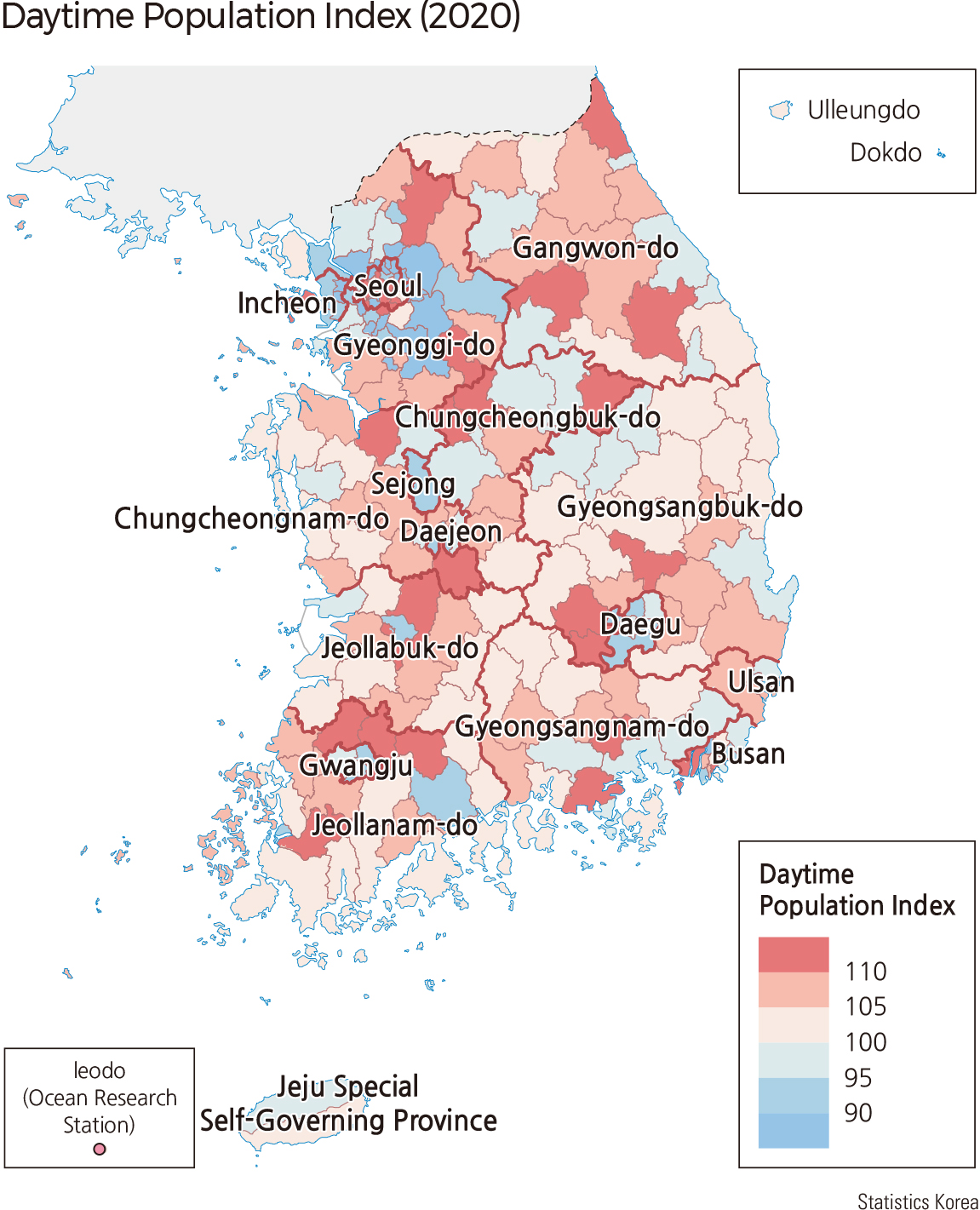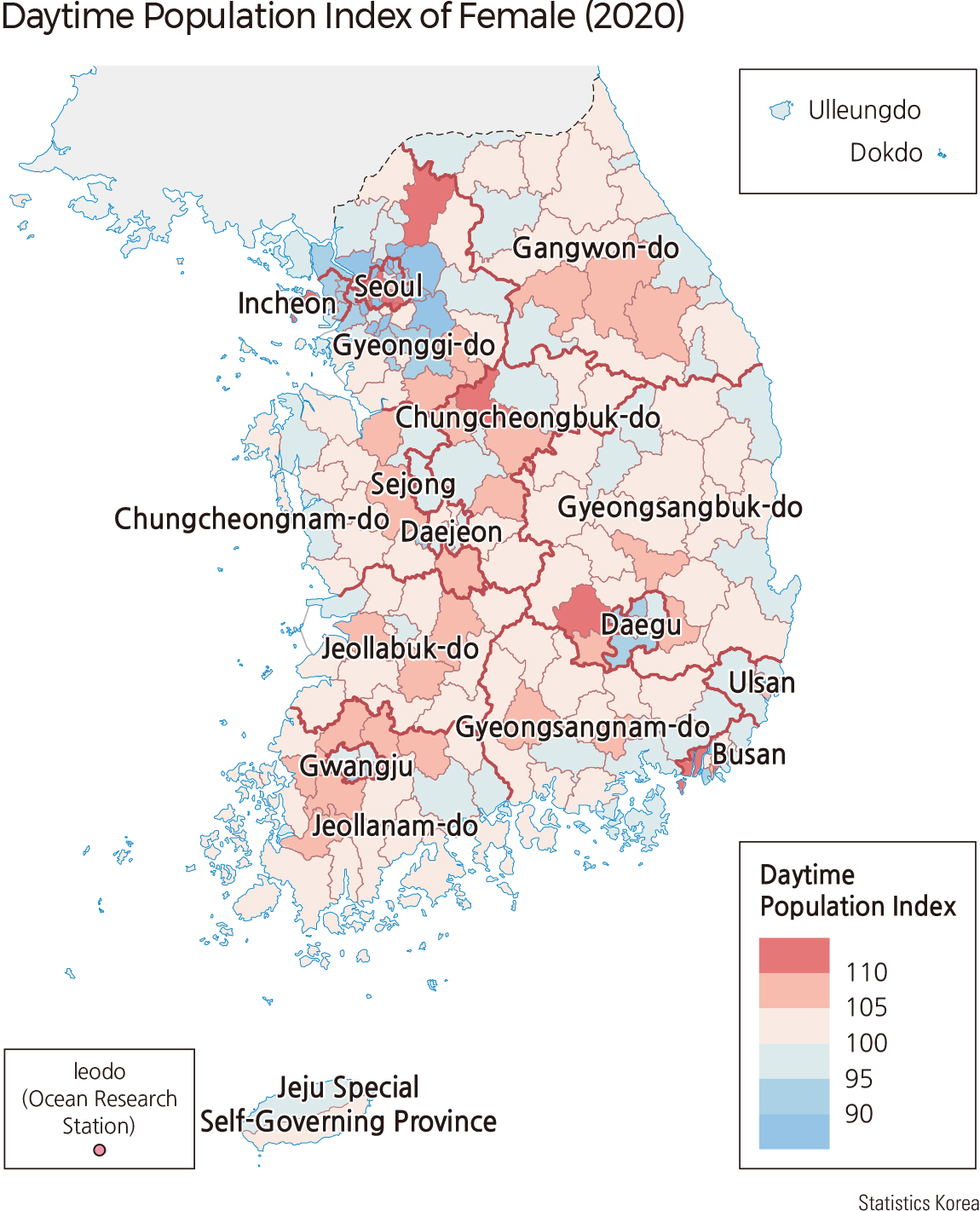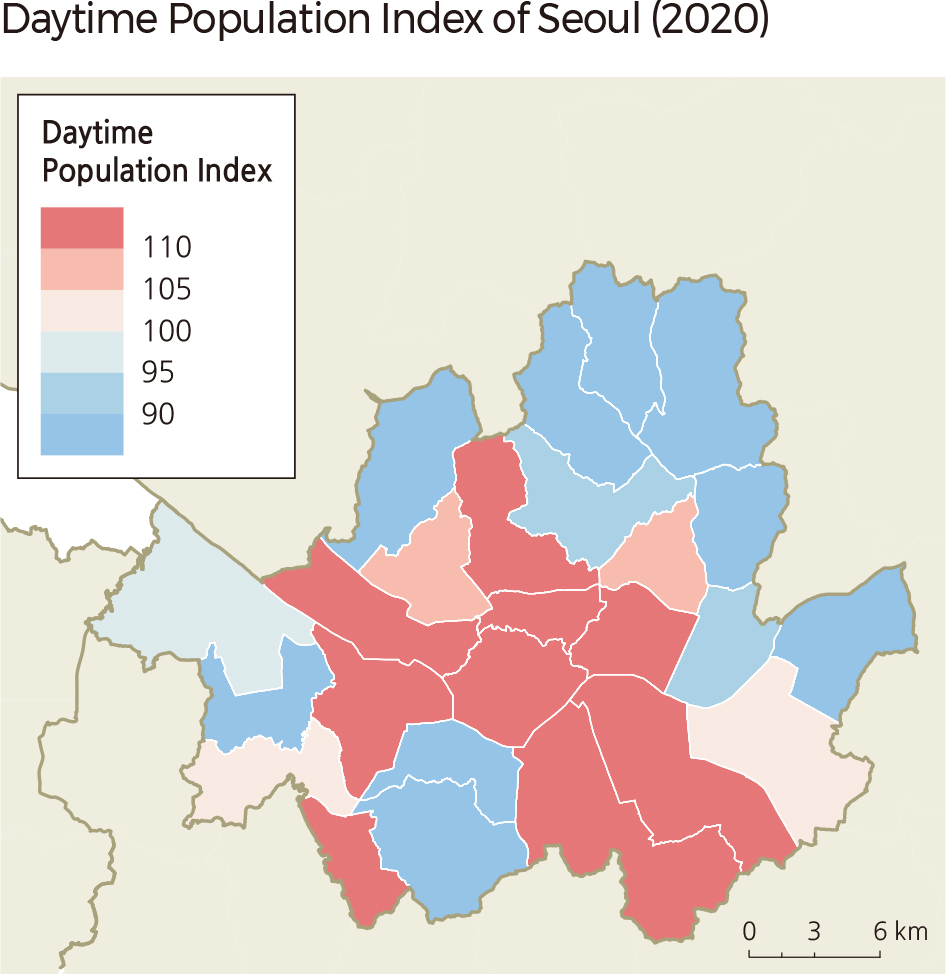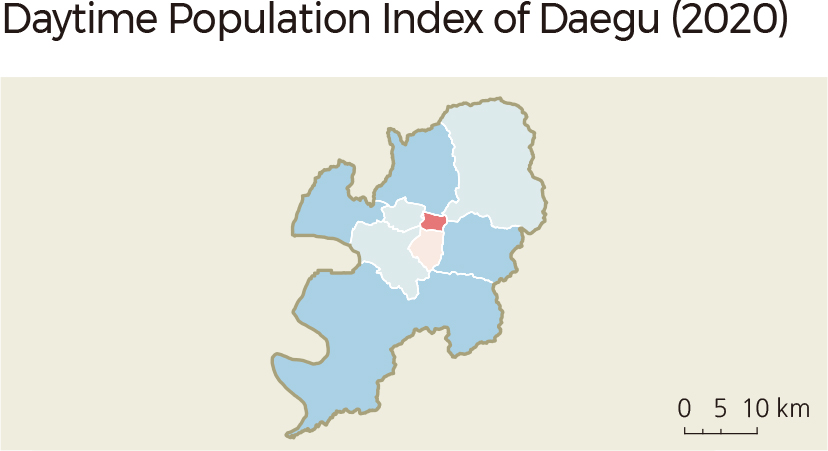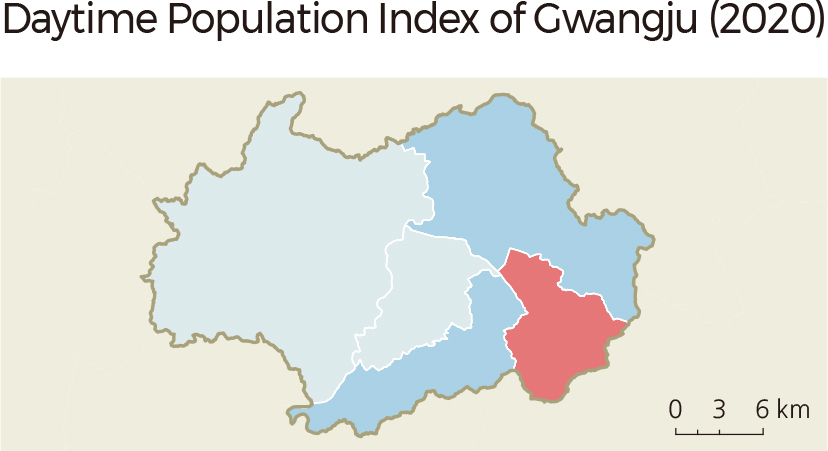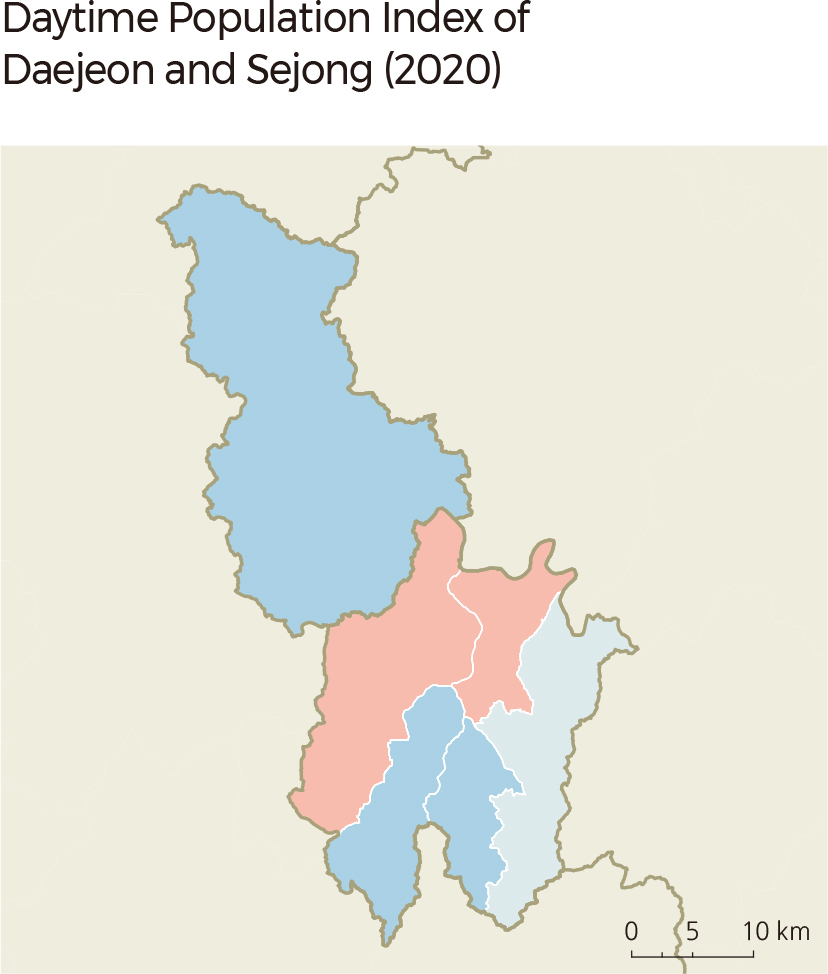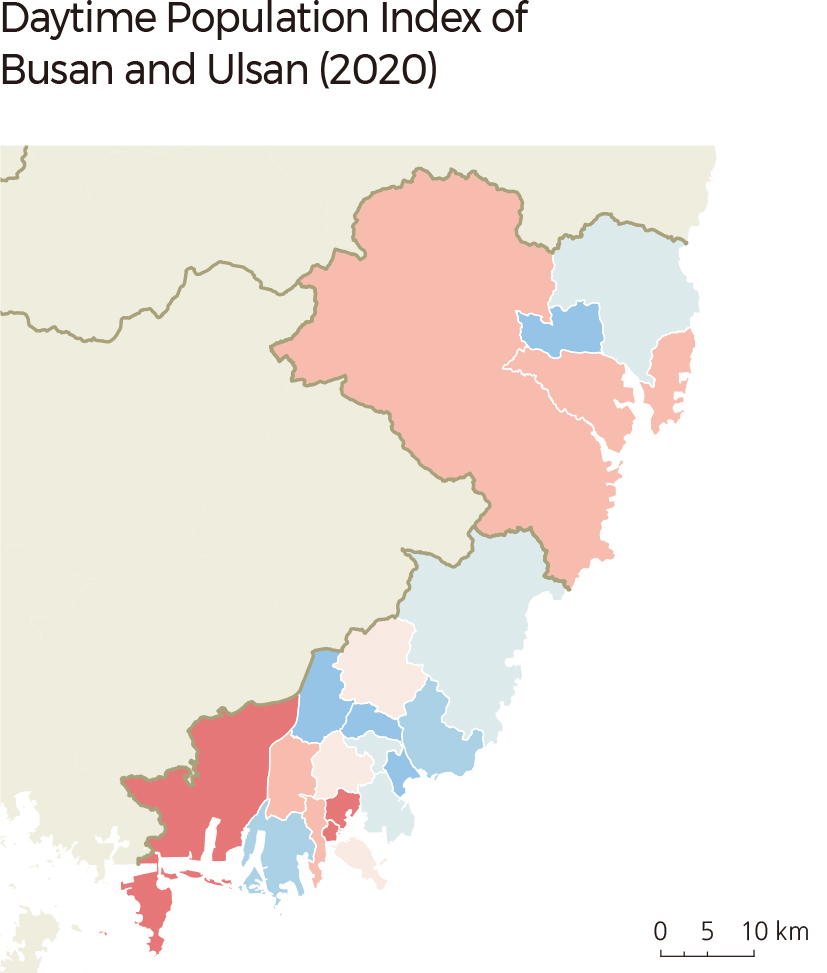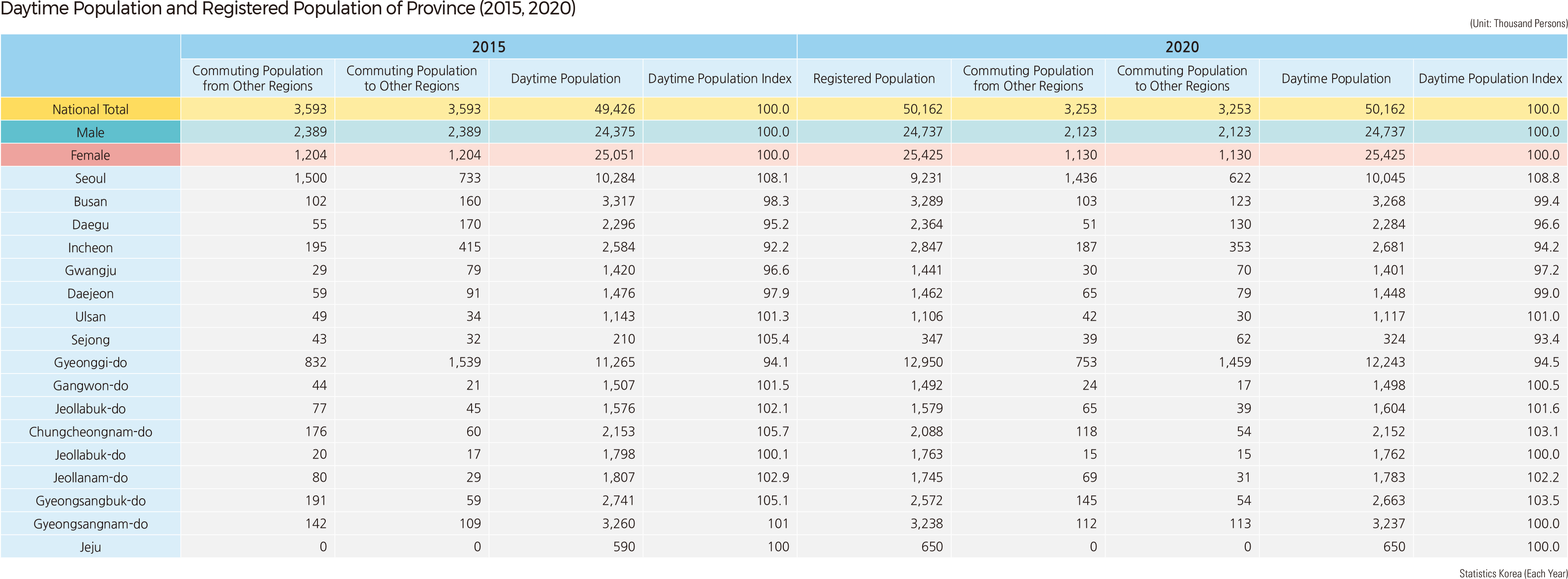English III 2021
The daytime population index is the ratio of the daytime population to the registered population and is a demographic factor that well expresses the characteristics of a region. The daytime population is calculated by adding the commuting population from other regions to the registered population of the region and subtracting the commuting population to other regions. Areas with a daytime population index of 100 or less indicate mainly residential areas. Areas with a daytime population index of 100 or higher indicate areas with densely populated workplaces and schools. In the Seoul Metropolitan Area, the daytime population index is high in areas with dense business facilities in Seoul and industrial facilities outside of Gyeonggi-do, while the daytime population index is very low in residential areas of Seoul and in the -si/-gun/-gu areas of Gyeonggi-do adjacent to Seoul. In other provinces, the daytime population index of -si/-gun/-gu areas, where industrial facilities are located, is high, and the daytime population index of cities with large populations, like major provincial cities, is low. At the -si/-do area levels, Seoul (108.8) has the highest daytime population index as of 2020 because of the influx of commuting from Gyeonggi-do (94.5) and Incheon (94.2). In most metropolitan areas except Ulsan, the daytime population index is less than 100 because more people commute to the surrounding provincial areas than to commute to the metropolitan areas. Two changes occurred in the daytime population indices between 2015 and 2020. First, the daytime population index for 2020 has a smaller deviation from 100 compared to 2015 in most regions. This change is due to a decrease in the commuting population as a result of the direct impacts of COVID-19. Second, there is the change of Sejong. Recent large-scale residential complexes developed in Sejong changed the daytime population index from a net inflow (105.4) in 2015 to a net outflow (93.4) in 2020. The daytime population index is very different even within metropolitan areas. For example, the daytime population index of Seoul is the highest nationwide at 108.8, but 12 out of 25 areas of Seoul have a daytime population index of 100 or less, Eunpyeong-gu (77), Gwanak-gu (80), Dobong-gu (81), Jungnang-gu (81), Yangcheon-gu (81) are the five municipalities with the lowest daytime population index. On the other hand, Jung-gu (321), Jongno-gu (245), and Gangnam-gu (193) belong to the three municipalities with the highest daytime population index. In the metropolitan areas, the daytime population index is high in the old downtown area, where there is a decrease in the urban population and the concentration of business facilities, or in the outskirts of the city where large-scale industrial facilities are located. The daytime population index also differs by gender. For example, in areas where men's daytime population index exceeds 100, women's daytime population index also often exceeds 100. In other words, in regions where net inflows occurred due to commuting, there are many cases of net inflows from both men and women. However, since men's commuting rates are larger than women's, men's daytime population index has a greater deviation from women's daytime population index in most regions. |
